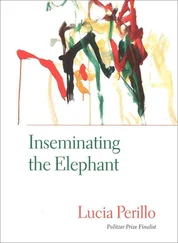“I wanted to look studly,” he says, sucking in his belly. The thought had not occurred to me, that he’d seek romance on this trip. The day does not seem conducive to romance — the cloud ceiling high but solid.
The place called Paradise where the asphalt trails do their zigzagging lies at an elevation of 5,000 feet. His teeth are chattering but Angus assures us: “Don’t worry, I will make it up to Paradise.”
It is difficult for me to believe that almost twenty years have passed since I worked at the mountain. As soon as we go through the entry gate, I am ransacked by my old ghosts. We’re in old-growth forest now, in the deep shade where the tree trunks glow reddish, almost purple, thickly grooved in patterns according to their species. We go by the limbless snags that are the remnants of a mudflow on Kautz Creek and by the trailhead of the secret trail I remember leading to two humongous Douglas firs. When we come to Longmire, the little enclave where I once lived, I am glad the place is more developed, bustling with people and tour buses. This little bit of ruin makes the sight of it easier to bear.
After Longmire, the angle of the road increases as the trees begin to shrink. We pass the trailhead to Comet Falls, which is the trail I took to my old workstation. I tell Becky about the man who tried to walk across the top of the falls in golf cleats, and about how his girlfriend ran all the way down to Longmire, out of her mind with the sight of his body dropping inside the water column. Marianne Moore wrote a famous poem about Mount Rainier, in which a mountain goat’s eye is fixed on a waterfall “which never seems to fall / an endless skein swayed by the wind, / immune to the force of gravity. . ”
But of course the man was not immune.
The alpine meadow above Comet Falls is where I worked one summer, changing the signs (this is harder than it sounds, as they were planted in concrete) and repairing the trails. I tell Becky how Jim, back in the early days of our romance, came to visit me here in the rain. He’d hiked with two friends who looked hypothermic, so I made soup on my camp stove and saved the day — that’s the kind of girl I imagine I was, the spunky saver of the day. We all weave our private myths.
Becky tells me that I’m still an Amazon, but I suspect she is just trying to make me feel good, seeing as she has a habit of overestimating human nature. These days I am a Roman, right there with Ovid when he says: Call no man happy until he is dead and buried.
Yet the challenge remains that there is still this day , which has erected itself before us like one of those signs planted in concrete. And I probably will live through it, a day when my friends and I are going to travel a mountain path, and we probably will see a bird or two and a flower or two, and those things should be goddamn good enough for me to record on my list of gratitudes.
Soon the Nisqually glacier appears before us, its snout like a strip mine, a pile of dusty slag filling the wide canyon where the glacier drips to form a river that is always being born. A wide steel bridge spans this place, a bridge that looks like it was built for the sole purpose of being ridden over on a new Harley-Davidson Dynaglide. I bet Angus is terrified.
In Marianne Moore’s poem, this mountain is an octopus of ice, seen at first from the two-dimensional view of the map, the mountain outlined by the twenty-eight glaciers that sprawl down its sides. She wrote the poem after coming here on one trip from New York to visit her brother who was stationed at the shipyard in Bremerton. Her approach took a primitive version of this same road, as she too headed for Paradise.
The poem renders the mountain from varying perspectives — we see the rocks close up and from afar, we see both the map and the living mass. Moore quotes from a dozen sources, from spiritual treatises to tourist brochures, and we’re referred to Henry James and Greek antiquity by way of explanation. She means to make us dizzy, as the colors of the lichen-covered rocks are dizzying: “the cavalcade of calico competing / with the original American menagerie of styles.” The poem emulates in form the myriad stuff it is describing.
Filmmakers came to the mountain when I worked here to shoot some footage to accompany Moore’s poem for a PBS series. As the resident ranger-poet, I lobbied heartily to escort them around the park. They too were from New York, and I remember their brand-new pack boots and enormous cache of M&Ms, as if they were prepared to bivouac for days. Their gear was hardly broken in, I noted smugly, before marching them straight uphill.
They needed footage to accompany two passages in particular, and my heart went haywire when they left the locations up to me. They wanted to illustrate the penultimate stanza of the poem, where Moore describes the trees she must have seen on her hike to the ice caves that once lay under the Paradise glacier:
Is “tree” the word for these things
“flat on the ground like vines”?
some “bent in a half circle with branches on one side
suggesting dust-brushes, not trees;
some finding strength in union, forming little stunted grooves
their flattened mats of branches shrunk in trying to escape”
from the hard mountain “planned by ice and polished by the wind”
“Cushion krummholz” is the official name for these trees stunted by the altitude, a term that is uncharacteristic of Moore not to have used. The natural history contained in the poem is actually a little crackpot, since Moore had also visited Banff on her trips west and conflates these two locations.
The filmmakers also wanted footage to suit the poem’s close, where Moore’s version of nature gets wilder and more fearsome, finally resulting in an avalanche going off “with a sound like the crack of a rifle, / in a curtain of powdered snow launched like a waterfall.” So I took them to a place where we looked down on the Nisqually glacier, the same glacier whose snout we crossed on the road. (I think Moore might have climbed down to it — there is a picture of her standing on the edge of a dirty crevasse.) One of the sound technicians threw a rock while the other held up the microphone. And the result was strange karma — way across the valley, as if in response, a small avalanche tumbled down.
Moore spent the night at the Paradise Inn, which is where we go to take the chill from Angus’s bones when we finally arrive at the top of the road. Built in 1917 in typical Park Service style, out of the kind of logs that epitomize Park Service structures, logs that look as if they would make a good throne for an ogre, the inn is a place where I rarely set foot back when I was a ranger, meeting its comforts with my disdain, intended as they were for tourists, a word I always uttered — like the other rangers — with derision. Becky and Angus buy chili at the snack bar, but I stick to the cheese I’ve brought and a mealy apple from my own tree. I can at least be a climber in this regard — eating bad, cold food.
From here, Moore hiked with her brother to the mountain’s famous ice caves under the Paradise glacier, formed by the river that runs underneath. I do not know if Moore toured the caves as I did, entering the darkness with my headlamp where the river flows beneath the glacier, following the river until it exits at the wide mouth of the cave. Her poem is full of colors that seem accurate enough: emerald and turquoise and manganese-blue. They would have been lit by daylight through the dense quartz layer of the ice, which gives the colors a muted neon glow.
But the Paradise glacier is just about gone now, its lower reaches reverted to firn , the intermediate state between ice and snow. It is sad to fathom how the fundamental thing — a glacier — on which Moore built her poem could have disappeared, for the poem is nothing if not a statement about the endurance of the unfathomable complexities of nature in the face of the human desire to get them figured out. The fact that the glacier has melted away delivers a blow to the gut of the poem. It may have been complex, but it did not endure.
Читать дальше











![Various - Birds and Nature, Vol. 12 No. 5 [December 1902]](/books/745517/various-birds-and-nature-vol-12-no-5-december-thumb.webp)
![Various - Birds and Nature Vol. 11 No. 2 [February 1902]](/books/745533/various-birds-and-nature-vol-11-no-2-february-1-thumb.webp)